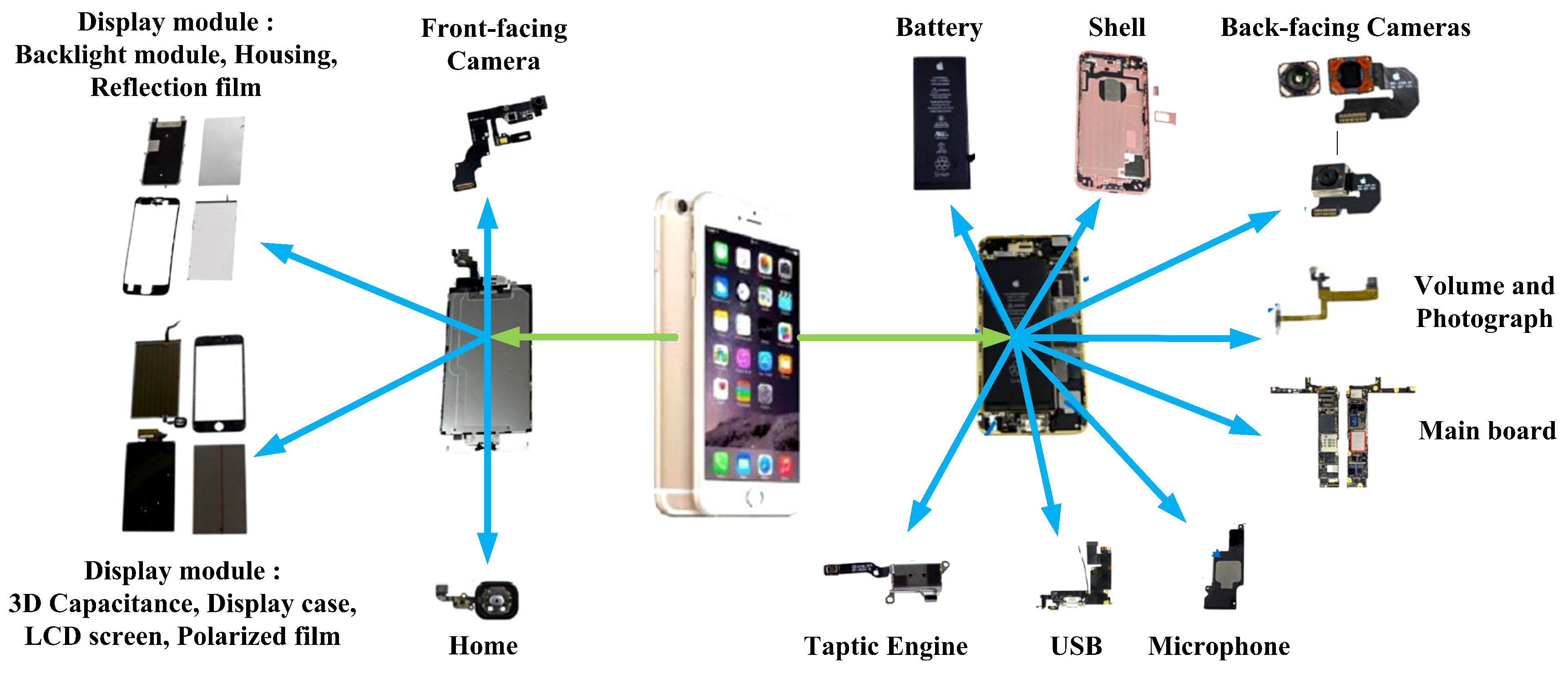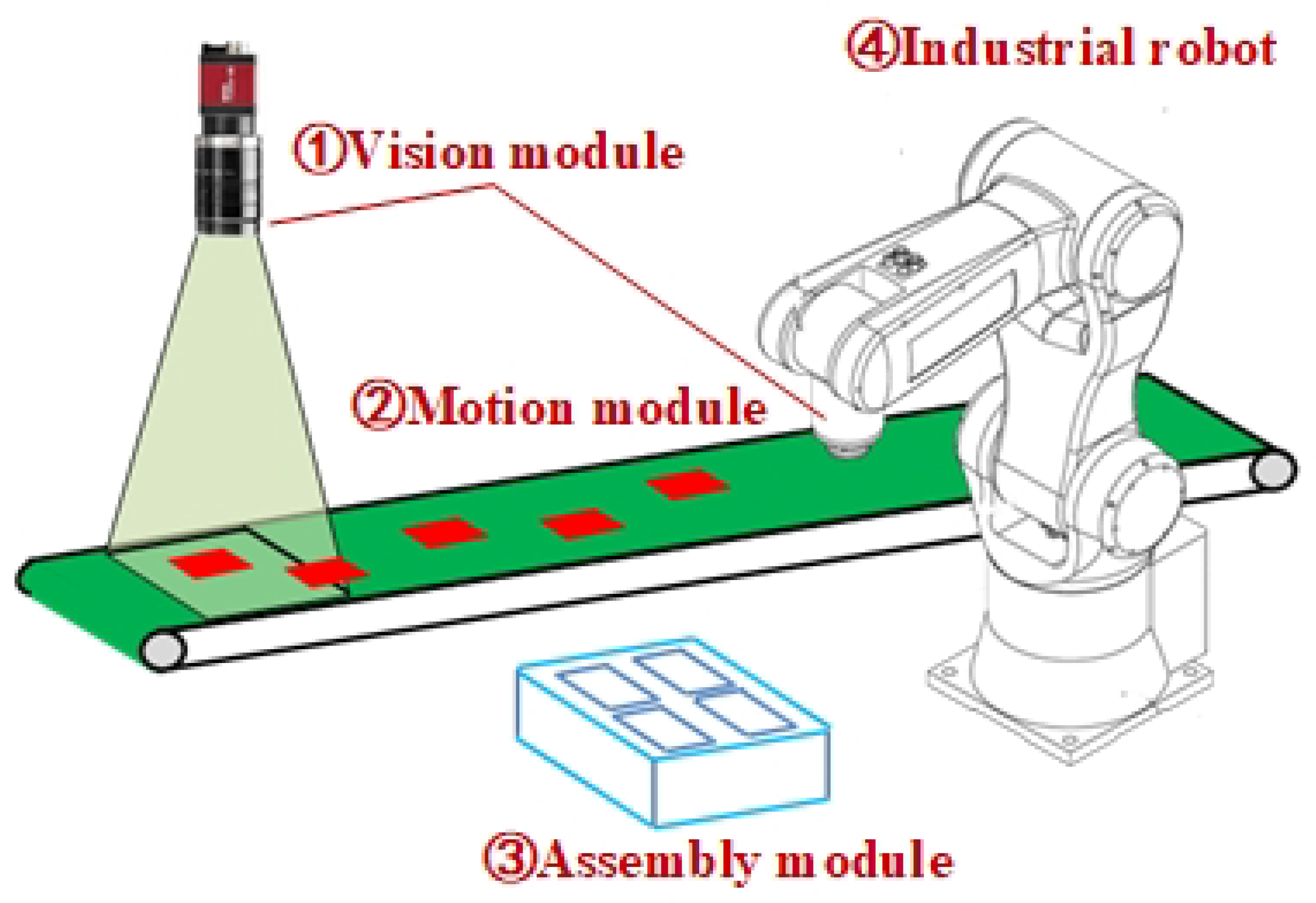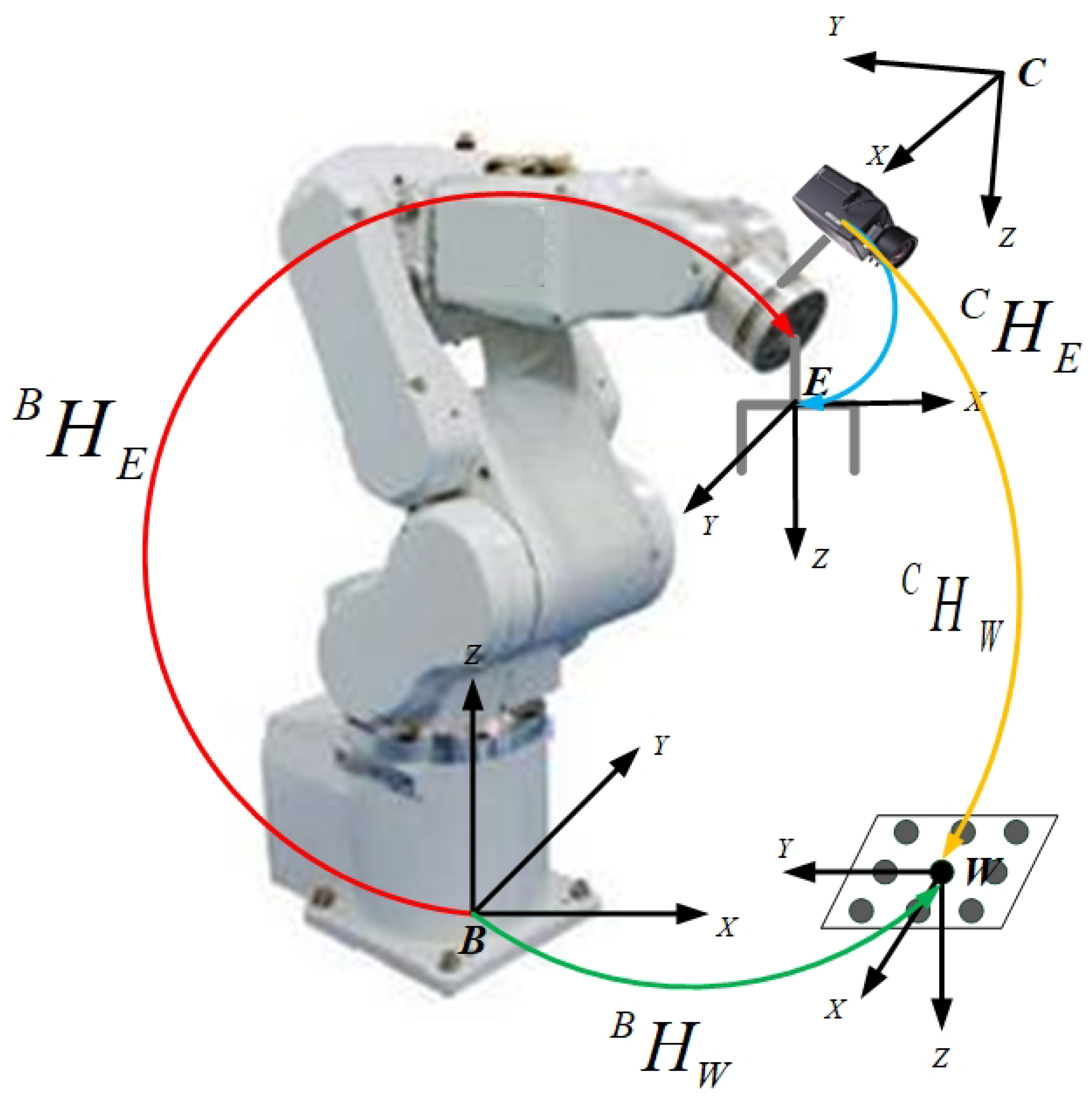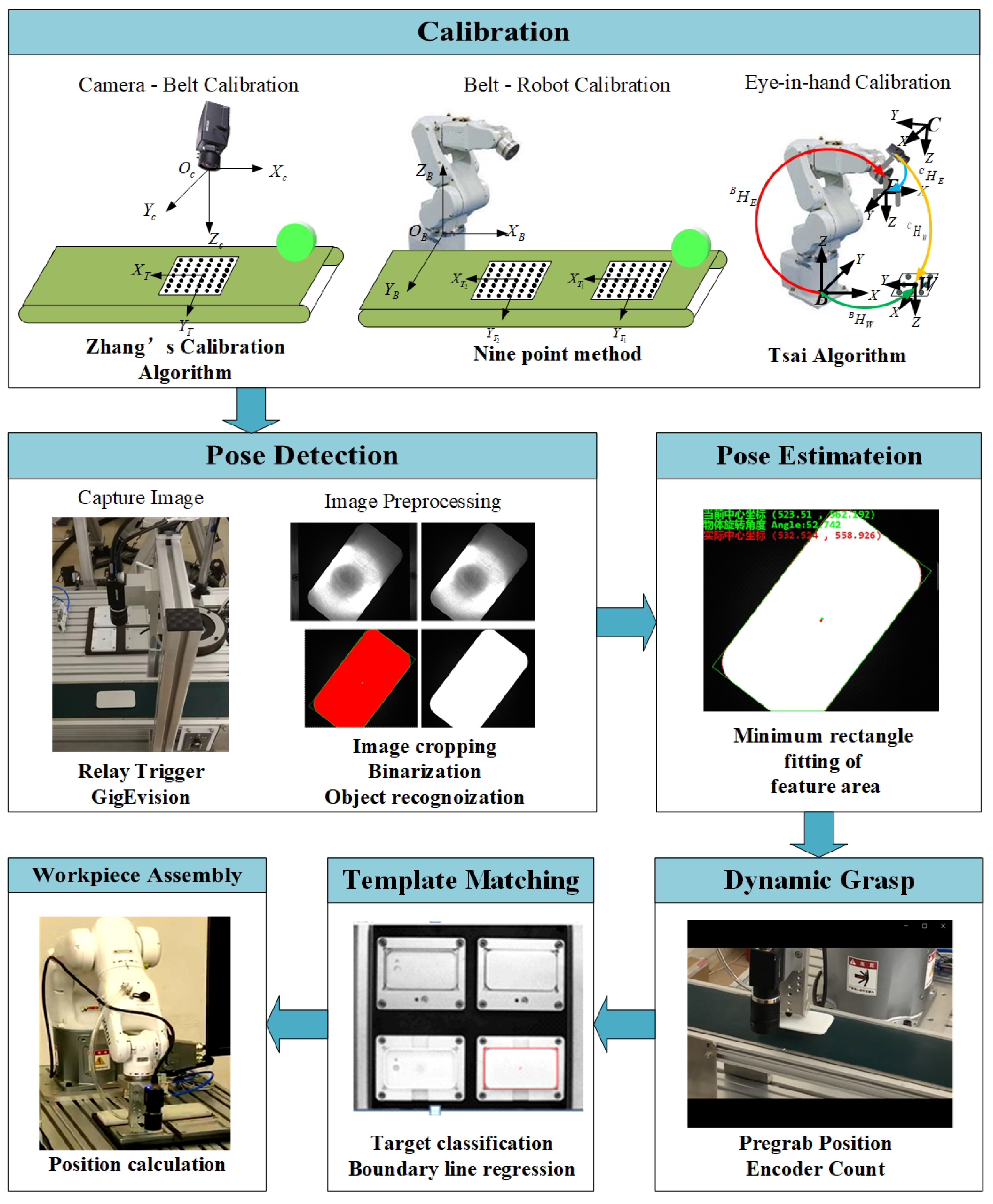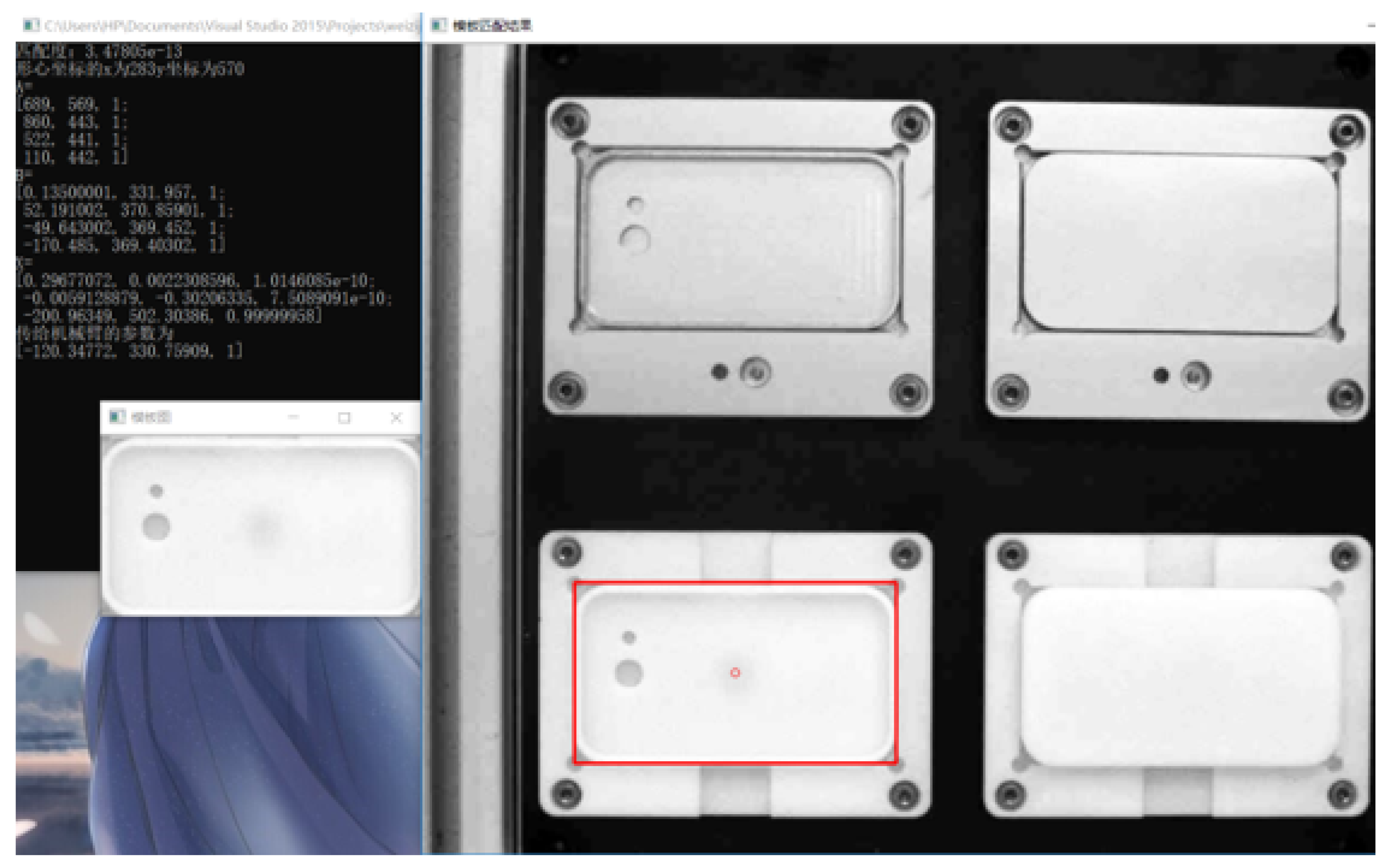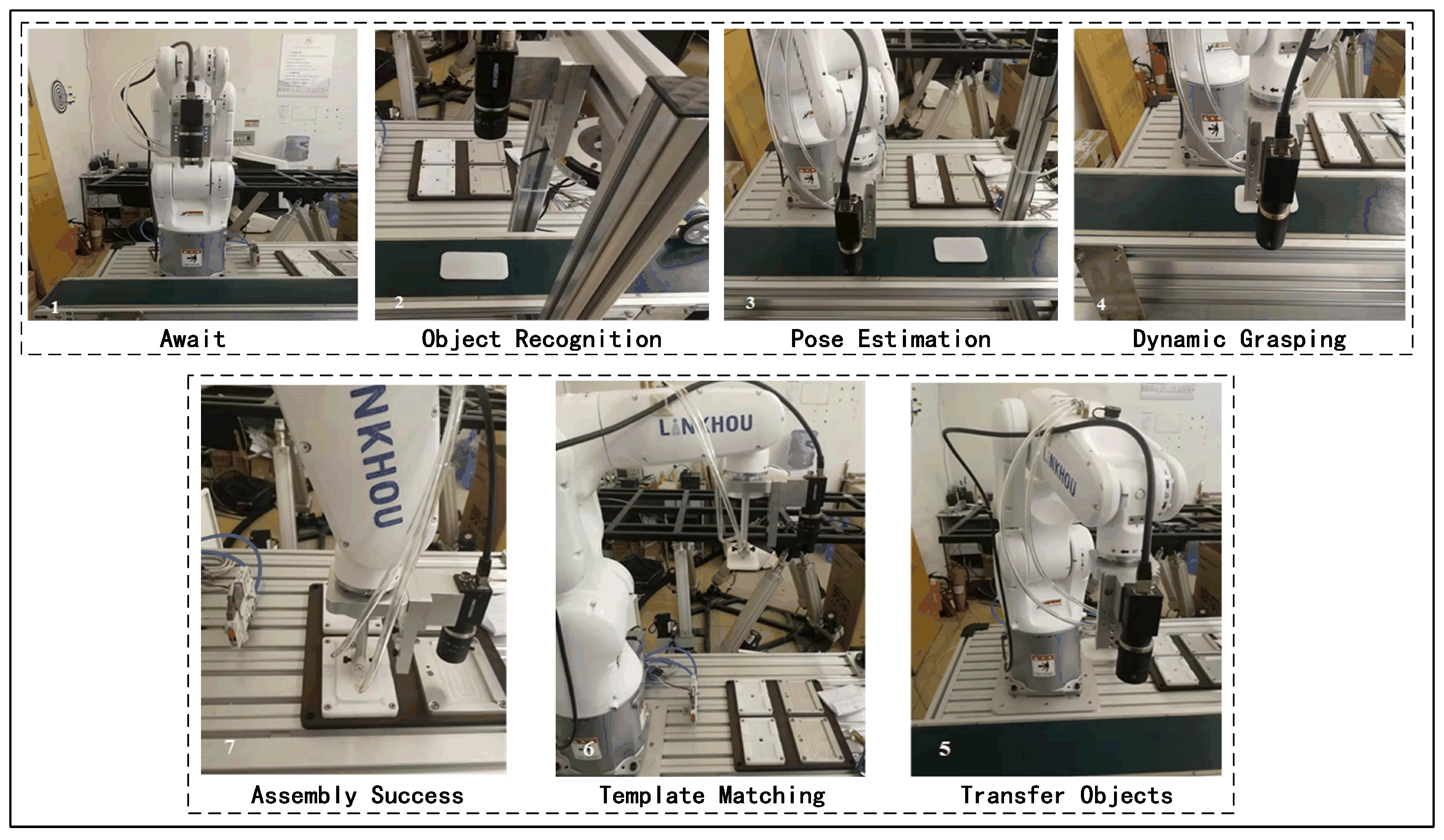1. Introduction
Continuous progress of product design concepts has had a great impact on Computer, Communication and Consumer (3C) industry manufacturing technology. Many enterprises are trying to shift production lines from mass production to mass customization. A production system should have the capability to handle smaller batch sizes [
1]. As one of the representatives of the 3C industry, mobile phones are an indispensable communication tool in modern life, which have the characteristics of compact design and rapid updating. Phones assembly task is complicated and varied, usually involving many parts and tools (see
Figure 1). and there are several challenges [
2], which include the display module, camera, battery, and main board. After investigation, the assembly process of mobile phone is as shown in the
Figure 2. The mobile phone manufacturing process is manual or semi-automatic, which also leads to high manufacturing costs [
3]. The application of robot technology brings opportunities to production line automation. The automation level of phone production lines requires the improvement of robotic technology’s application. If robots replace humans, the labor cost can be greatly saved [
4]. However, the assembly parts of mobile phones are various and the robot operation ability is weak [
5,
6].
Many robotic companies and researchers have been focused on dual arm robots, such as the Baxter robot [
7], Yumi robot [
8], and NEXTAGE robot [
9]. They have been applied in some industrial tasks [
10]. However, the dual arm robot with precise hardware is of high cost [
11]. Therefore, the signal-arm robot is popular with some companies. There are many difficulties in the process of mobile phone assembly, including pose detection, dynamic grabbing, multi-type assembly, and so on. Vision on the production line is a common set of sensors used to obtain information. The calibration process of a camera is tedious. In addition, sometimes the information of a workpiece being assembled is incomplete. For example, there is often a situation beyond the camera’s field of view [
12], due to the cost constraints of the industrial site and the limited manufacturing process of the camera. In addition, the sampling frequency of the camera under a relay trigger does not match the speed of the conveyor belt [
13], which also easily causes incomplete image information of the workpiece.
Vision and force sensors are the two common ways for a robot perceive the environment [
14]. The mechanical constraints may be used to guarantee the initial position of the workpiece. If the model of the assembled workpiece is changed, the mechanical tools should be different. Machine vision was used to detect the different types of workpieces, which improved the flexibility of the production line [
15]. In 2013, the personal household robotic systems, such as HERB and PR2, perceived the surrounding environment and completed some actions, such as cleaning and self-charging with the help of visual sensors [
16]. Cai et al. achieved complex movements such as grabbing and placing objects, which combined the multi-degree-of-freedom robot with the active visual positioning system [
17]. The target 3D point cloud is segmented by machine vision, and then the trained artificial neural network is combined with machine vision to find the most suitable position for grasping the object [
18]. Stephen et al. [
19] developed the assembly platform of dynamic binocular visual feedback system. Image servo data acquisition is used as the basis to judge the next visual measurement and guide the assembly of the manipulator. A “precision assembly robot” with a real-time vision system [
20] has been developed, and a dynamic target recognition and tracking algorithm based on an improved Camshaft was proposed.
Therefore, the identification and positioning of the workpiece is very important and a lot of work has been done [
21]. In [
22], a multi-workpiece recognition algorithm was proposed to locate the three-dimensional workpiece of monocular vision in a complex industrial environment, which was based on adaptive sub-pattern manifold learning. Wan et al. [
23] taught robots to perform object assembly using multi-modal 3D vision. Compared to 3-D vision, the monocular vision is low cost and easy to implement. For incomplete information workpiece detection, such as exceeding-field of view, Yang et al. designed a super-field component image measuring instrument by using image stitching technology [
12]. The adaptive image stitching algorithm was proposed in [
24] for panoramic image acquisition of super-field components. In [
13], Liu et al. realized the effective recognition of the exceeding-field workpiece by extracting the feature points on the workpiece and conducting shape matching.
In addition, the force control or hybrid position/force control method is commonly used for assembly tasks. In previous studies, there were three classes of control methods: position control, force control, and hybrid position/force control [
10,
25]. Position control is used to complete the assembly task and vision sensors are widely used to get the positions and orientations of assembly objects [
26,
27]. The electronic circuit assembly was completed using vision based on OpenCV for an industry robot [
26]. The peg-hole assembly was completed through a vision system estimation [
27]. The interaction force was obtained by force sensors to guide the robot to complete the assembly [
28,
29]. Most of the assembly strategies are based on the idea of modeling. A three-point contact model is built, and the pose misalignment between the peg and hole is estimated by force and geometric analysis [
30]. A novel modeling method of geometric errors was proposed by Zhang et al. for precision assembly [
31]. A control scheme was used to teach the contact states during operation [
10]. A robotic assembly parameter optimization method [
23,
32] was proposed to enable industrial robots to assemble a workpiece.
Compared with the previous work, this paper is aimed at a mobile phone production line process using a robot. A comparative overview
Table 1 is listed, which shows the key differences between the different previous systems and the proposed system. The automatic system has also been extensively used in the food industry [
33]. There are few references for applying this system to a mobile phone assembly line.
In this work, the robot system is proposed to realize the mobile phone assembly process’s automation. At first, a minimum rectangle fitting algorithm is proposed to solve pose estimation problem of moving workpieces with incomplete information. The camera-belt-robot multi-hybrid modular calibration is used to calibrate the assembly system, which could obtain the pose relationship among the robot, the conveyor belt, and the two cameras. Then a posture estimation algorithm on a moving conveyor belt is proposed to track the objects with different speeds. At last, the effectiveness of the method verified that back shell and screen components were assembled with a six-degree-of-freedom LINKHOU.
The rest of this paper is laid out as follows.
Section 2 introduces the assembly system description of phone screen components and housing cover. In
Section 3, the proposed method is described in detail. Experiments were performed to validate the proposed method, and the experimental results are presented and discussed in
Section 4. Finally, the results of the current work were summarized and future directions were discussed in
Section 5.
